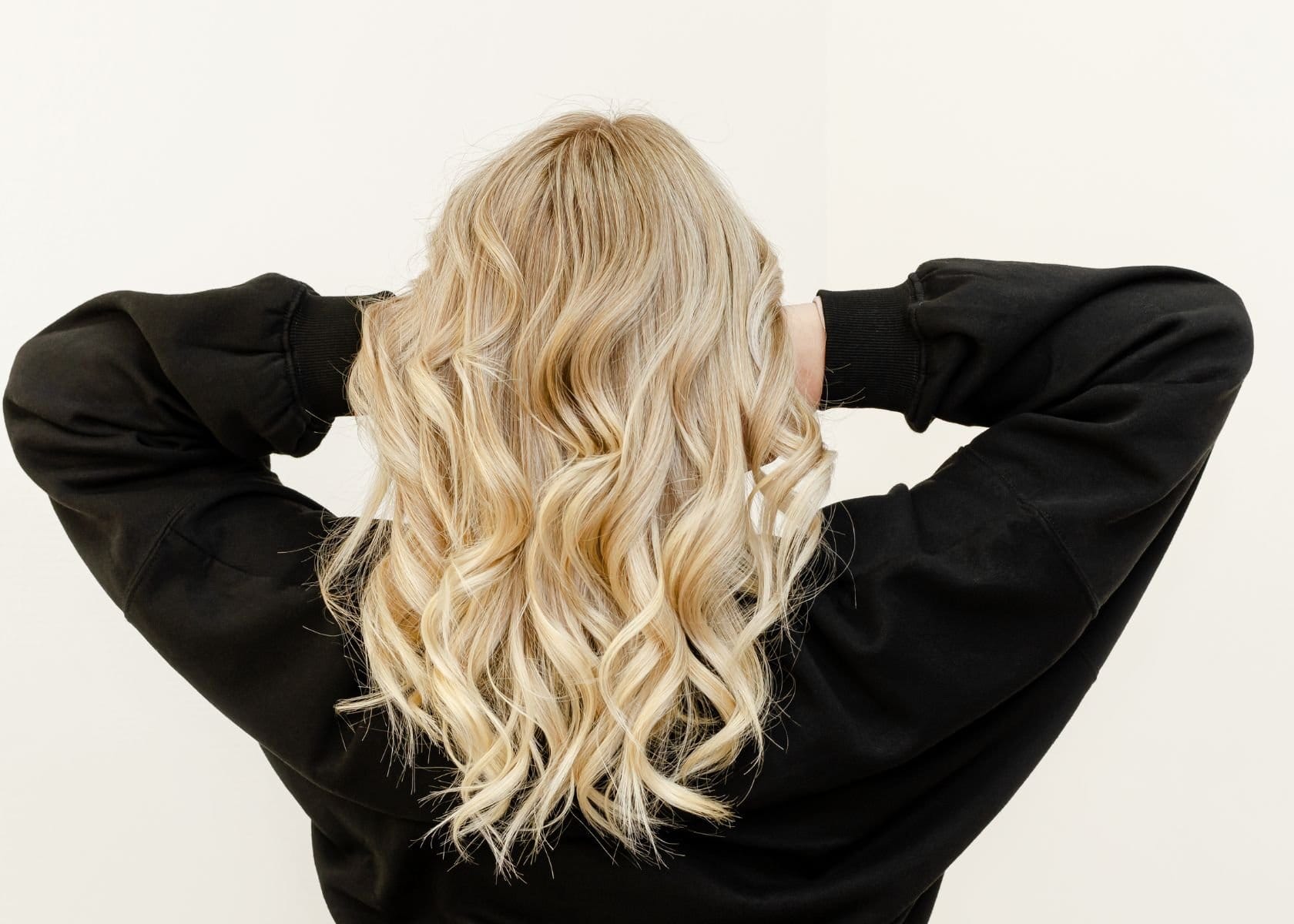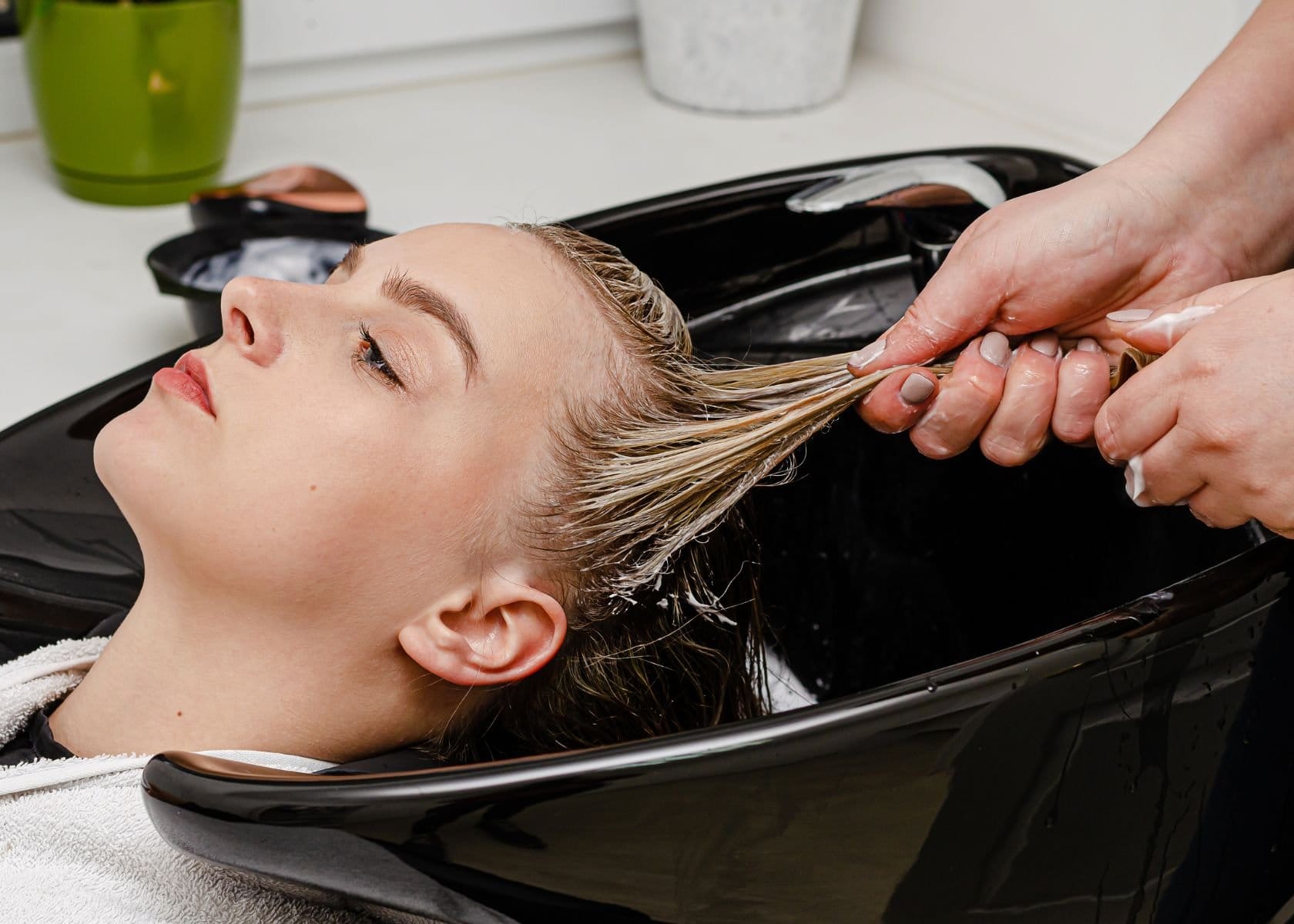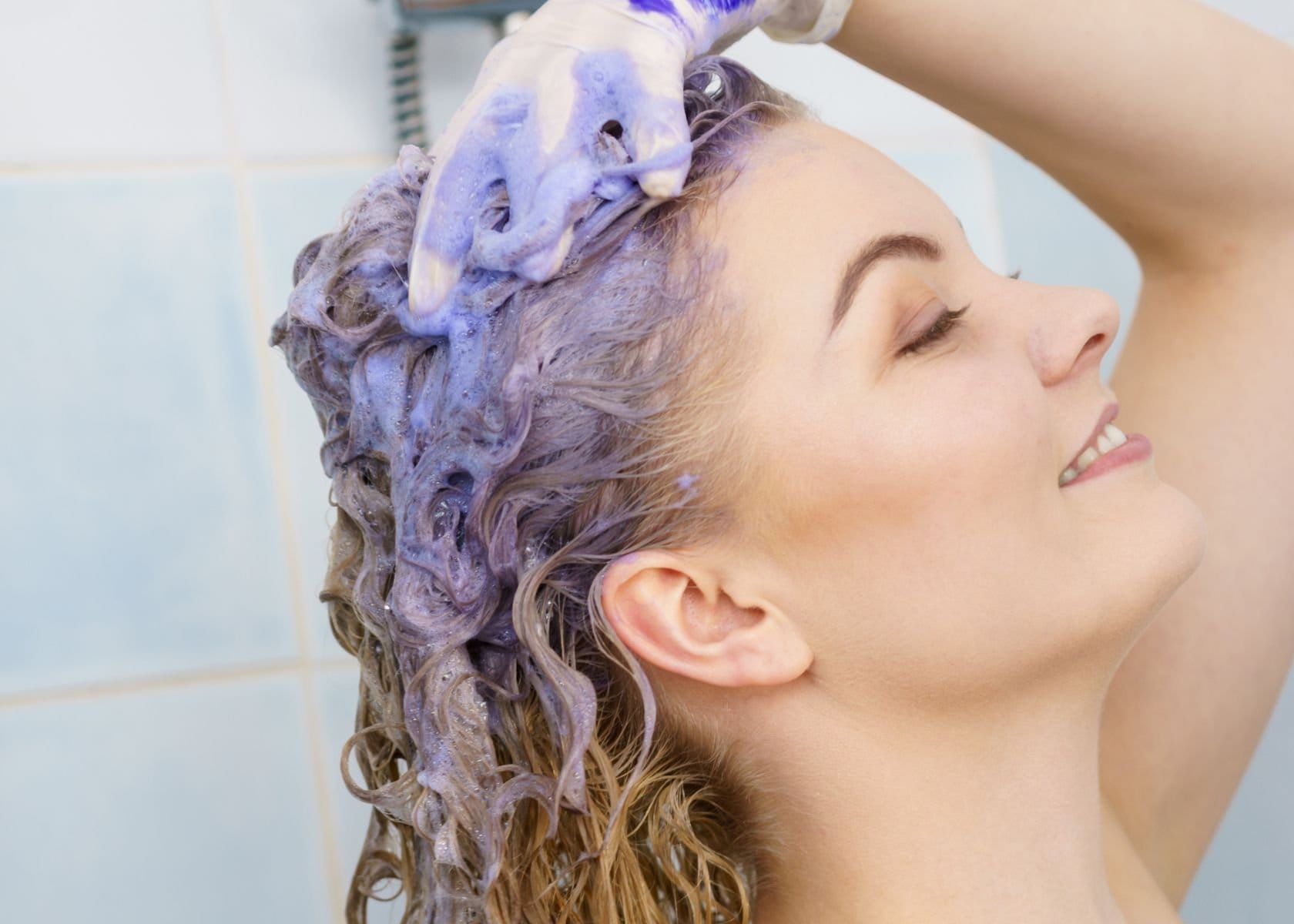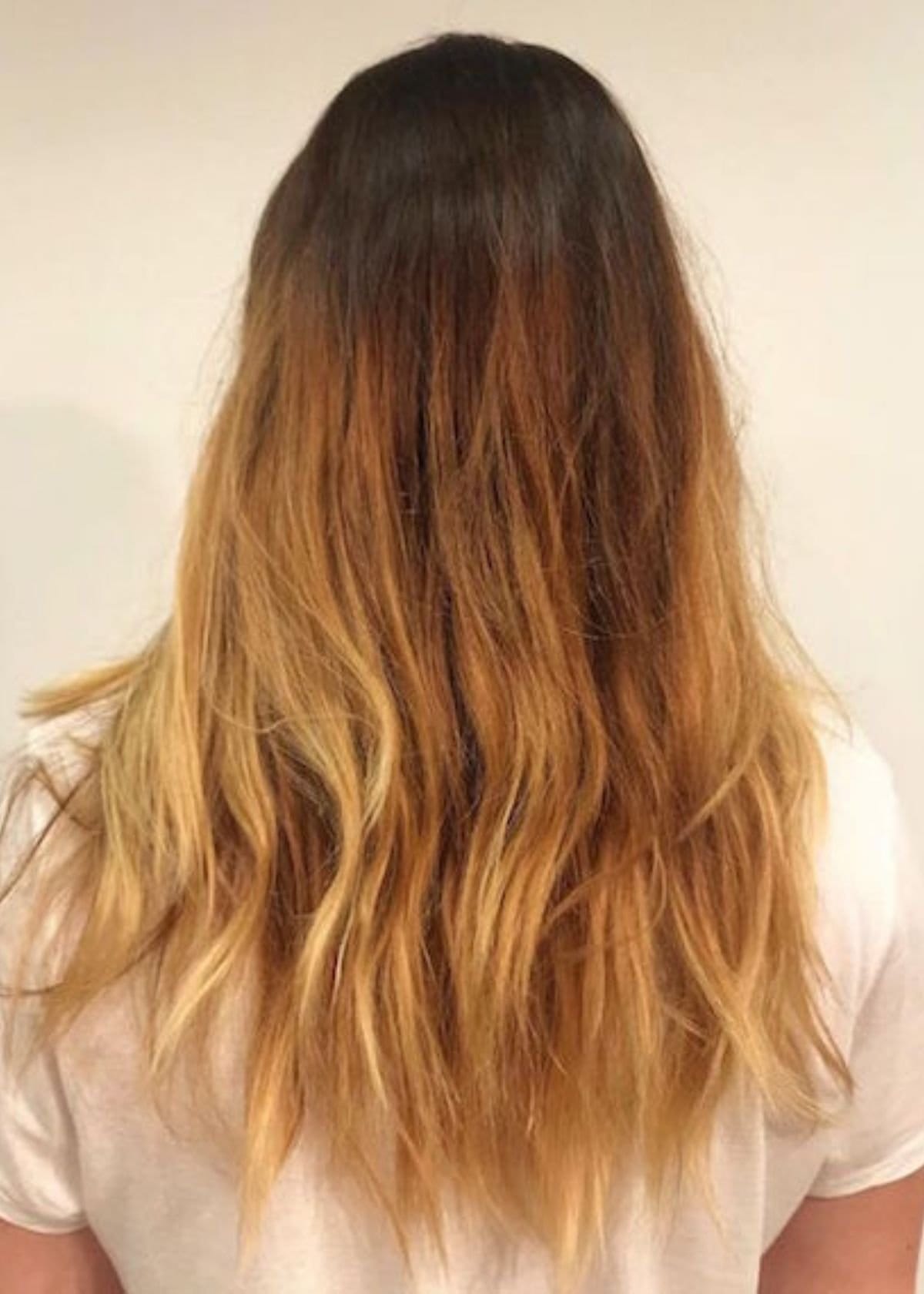Bleaching is a common way to lighten hair, but what follows can make or break the health and color of your locks. Hair toner plays a critical role after bleaching by neutralizing unwanted brassy or yellow undertones, helping achieve the target hair color.
However, skipping this crucial step might lead you down a path where your dream wet hair color fades into an undesired tone faster than expected.
It's important to maintain that fresh-from-the-salon look and avoid further damage that could happen if toning hair is delayed until after another bleaching session. So, while it might seem like just another product to buy, using a toner is key to ensuring healthy-looking dyed hair that stays true to its intended shade for longer.
Read on to discover more about keeping your bleached hair looking its best!
- Skipping toner after bleaching can lead to orange or brassy hair, as the bleach leaves your hair with unwanted warm undertones that toner is specifically designed to neutralize.
- Not using toner results in faster fading of the desired hair color because it plays a crucial role in maintaining and refreshing the vibrancy and evenness of color-treated hair every 6-8 weeks.
- The absence of toner post-bleach can cause damage to your hair cuticle, making it brittle and prone to breakage and negatively affecting its overall texture due to increased exposure to environmental stressors.
The Importance of Using Toner After Bleaching

Using toner after bleaching is crucial for achieving the desired hair color. It helps to neutralize unwanted brassy or yellow tones, leaving the hair with a more even and natural appearance.
What Is Hair Toner?
Hair toner acts as a miracle solution for bleached hair, aiming to achieve perfect shades or neutralize unwanted colors. After the hair bleaching process, strands often take on yellowish or brassy tones due to oxidation.
Toner steps in to correct these issues by adjusting the hair's undertone without changing its base color. This product caters especially to those seeking an even and more natural-looking shade post-bleach.
Different types of hair toners are available to address various concerns, including purple shampoo, or blue shampoo for at-home maintenance and professional-grade products used by stylists to target specific brassy orange colour needs.
Applying it after reaching a light tone of yellow helps ensure that your desired color shines through without causing additional damage. By refreshing your look with toner every 6-8 weeks, you maintain a vibrant, true-to-tone color.
Understanding what toner does for your hair is crucial before incorporating it into your care regimen.
What Does Toner Do for Hair?
Toner helps neutralize unwanted brassy or yellow undertones in bleached hair, making it a crucial step in achieving the desired hair color. It works by depositing color to counteract the unwanted orange and yellow tones and restore the hair to its intended shade.
This process is essential for maintaining blonde or color-treated hair, as these shades tend to develop brassiness over time due to oxidation.
Applying toner after bleaching can prevent damage and help maintain healthy, vibrant hair. Additionally, toner does not drastically alter the natural color of the hair; rather, it enhances and corrects existing shades.
Types of Toner
Toner comes in different types and formulations tailored to specific hair needs. Here are the various types of toner and their functions:
- Demi-permanent toner: This type of toner contains a low volume of developer and is perfect for enhancing natural hair color or refreshing faded hair dye.
- Permanent toner: It's ideal for those looking for long-lasting color correction and coverage for gray hair.
- Semi-permanent toner: This type is great for adding subtle hints of color, as it gradually fades with each wash.
- Purple toner: Designed to neutralize yellow or brassy tones in blonde hair, purple toners are often used on bleached or highlighted hair to maintain a cool shade.
- Blue toner: Used to counteract orange and brassy tones, blue toners work well on darker shades of blonde or highlighted hair.
- Gloss toner: This type adds shine and enhances the overall look while keeping the current color intact.
- Clear toner: A clear toner doesn't add any color but is effective in enhancing shine and overall tone quality without altering the existing shade.
Consequences of Not Using Toner After Bleaching

Not using toner after bleaching can result in hair having an orange or brassy appearance. It can also lead to color fading and cause damage to the hair.
Orange or Brassy Hair
Orange or brassy hair is a common consequence of not using toner after bleaching. When the bleached hair oxidizes, it can develop an unwanted warm undertone that appears orange or yellowish.
This occurs as the natural pigment in the hair is stripped away during the bleaching process, leaving behind these brassy tones. Hair toner helps to neutralize these unwanted tones and achieve the desired shade by introducing cooler undertones.
Not using toner after bleaching can lead to color-treated hair fading over time and developing brassy tones as it oxidizes. This can result in a less vibrant and more uneven appearance, affecting overall hair color quality.
Fading Hair Color
After dealing with brassy or yellow orange tones, the next concern for bleached hair is fading color. Color-treated hair gradually loses its vibrancy and intensity over time. The process of oxidation causes bleach-blonde hair to develop brassy tones and lose its original shade.
Without using toner after bleaching, the desired brunette hair color can fade more quickly than usual.
It is important to note that toner helps maintain the desired hair color by neutralizing unwanted undertones and preventing fading. Regular use of toner every 6-8 weeks can help refresh your color and keep it looking vibrant.
Damage to Hair
Toner helps to maintain the integrity of the hair, preventing damage caused by oxidizing agents. Bleached hair is more prone to damage due to its weakened structure. Without toner, bleached hair can become brittle and prone to breakage as it loses moisture and natural oils, causing brittleness and dryness in the strands.
Furthermore, failure to use toner after bleaching can result in an uneven hair texture characterized by porous and rough strands, making it difficult for further styling or coloring treatments.
The absence of toner also leaves the cuticle exposed, leading to increased vulnerability to environmental stressors such as UV rays and pollutants.
How to Use Toner After Bleaching?

After bleaching, carefully time the application of toner to avoid over-toning. Always select a toner that complements your hair color to achieve the desired result. For different hair colors, follow specific instructions for applying toner after bleaching for optimal results. Here is how to tone your hair after bleaching:
Proper Timing
Proper timing for toner application is crucial. It should be applied after bleaching when the hair reaches a light yellow tone. Applying toner too early can lead to double damage to the hair, so it's important to give the hair time to recover from the bleaching process before applying toner.
Timing also plays a role in maintaining the desired color. The toner needs to be refreshed every 6-8 weeks to keep brassy tones at bay and maintain the color of color-treated hair. This interval helps ensure that the hair always looks vibrant and healthy, avoiding fading or unwanted undertones.
Choosing the Right Toner
When selecting a toner for your hair, consider the shade of blonde you want to achieve. If you have light yellow tones in your hair, opt for a purple toner to neutralize them and achieve a cooler blonde shade.
Alternatively, if your hair has orange tones, choose a blue toner to counteract the warmth and create a more natural-looking blonde color. It is essential to match the toner with your current hair color and desired outcome.
Consider the condition of your hair when choosing a toner. Look for products that also offer nourishing or moisturizing properties to prevent additional damage from chemical treatments.
Additionally, ensure that the chosen toner is formulated for use on bleached or colored hair to avoid unwanted reactions or results.
Using Toner for Different Hair Colors
After choosing the right toner, it's essential to consider the specific needs of different hair colors when applying toner. For blonde or bleached hair, purple toner works best to neutralize yellow undertones and achieve a cooler shade.
On the other hand, for brassy or orange tones in darker hair colors, blue toner is more effective at canceling unwanted warmth and creating a natural look. Red or copper-toned hair benefits from using a green-based toner to balance out any excess redness and maintain vibrancy.
It's crucial to select the appropriate toner color based on your current hair shade to achieve the desired result without causing further damage.
What Happens If You Don't Use Toner After Bleaching? - FAQs
Bleaching your hair is a harsh chemical process that can leave your strands dry, brittle, and with an unwanted brassy or yellow tone. Using a toner after bleaching is an essential step to neutralize those warm, undesirable tones and achieve your desired cool-toned blonde shade.
Skipping this crucial step can lead to several issues. In this FAQs section, we'll address common concerns about what happens if you don't use toner after bleaching, including:
What happens to my hair if I skip the toner after bleaching?
If you don't use toner after bleaching, your hair might turn yellowish or brassy because the bleach leaves your hair lightened but not toned to a natural-looking dark brown.
Can skipping toner cause hair damage?
Yes, not using a toner can lead to more visible hair damage and oxidation, making your bleached hair look unhealthy and poorly maintained.
Why is toner important for color-treated or bleached hair?
Toner helps correct unwanted brassy tones in bleached or color-treated hair, ensuring it looks more natural and even-toned while contributing to overall hair health.
How does a toner work on bleached hair?
A toner works by adding subtle colors back into your bleached or color-treated hair that neutralizes unwanted yellowish or brassy tones, helping achieve a smoother and more desirable shade.
What should I do for my bleached hair maintenance besides using a toner?
To maintain healthy bleached hair, apply suitable Hair care tips like regular deep conditioning treatments, use specific Hair products designed for color-treated or oxidized Hair, and follow a consistent Hair regimen that includes repairing damaged strands.
Conclusion
Neglecting to use toner after bleaching can result in unwanted brassy or yellow tones. Implementing toner post-bleaching is an efficient way to maintain the desired hair color and combat fading.
What strategies have you found most effective for maintaining the vibrancy of your hair? Let us know in the comments below.
Read More About Using Hair Toners





